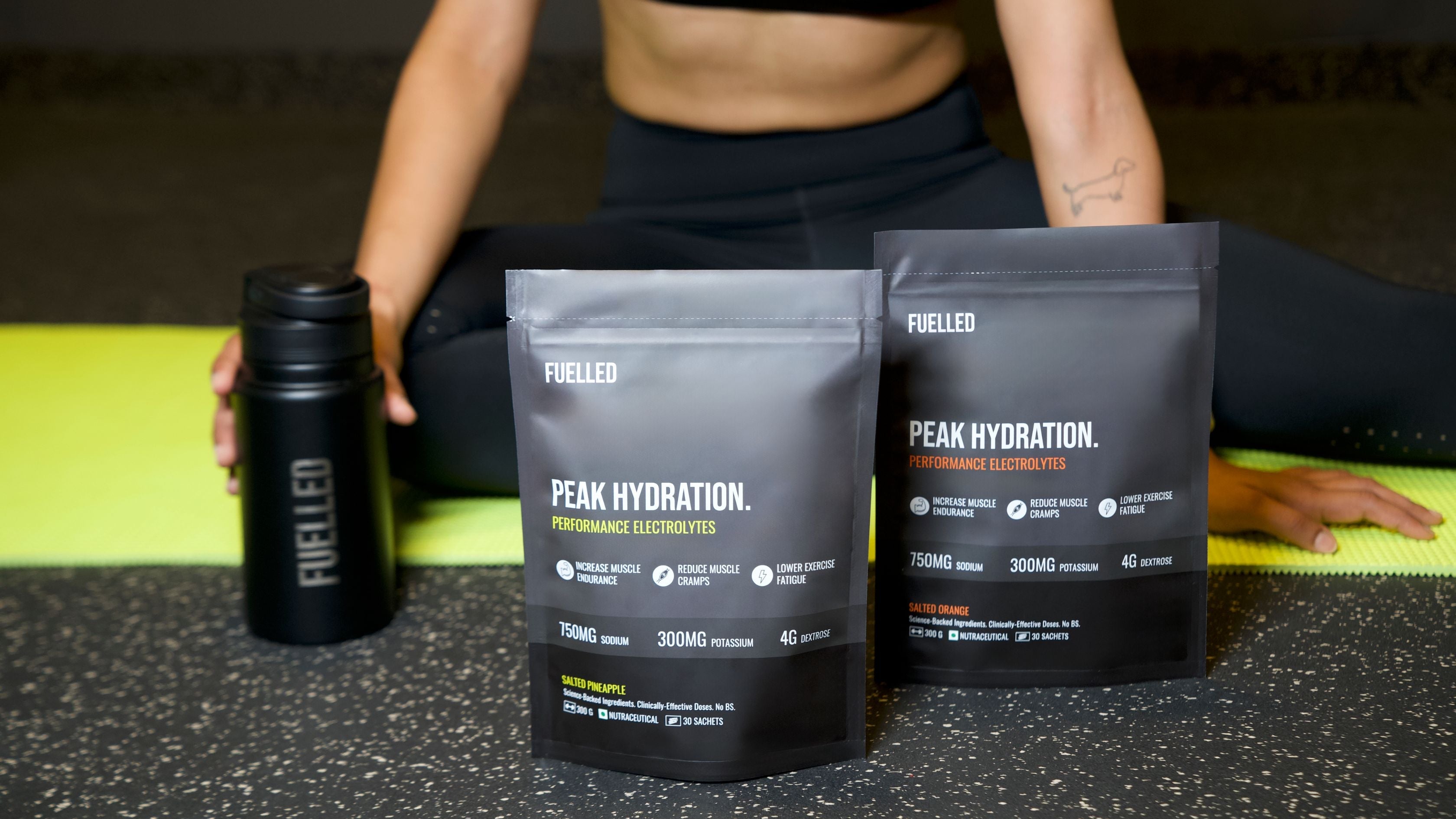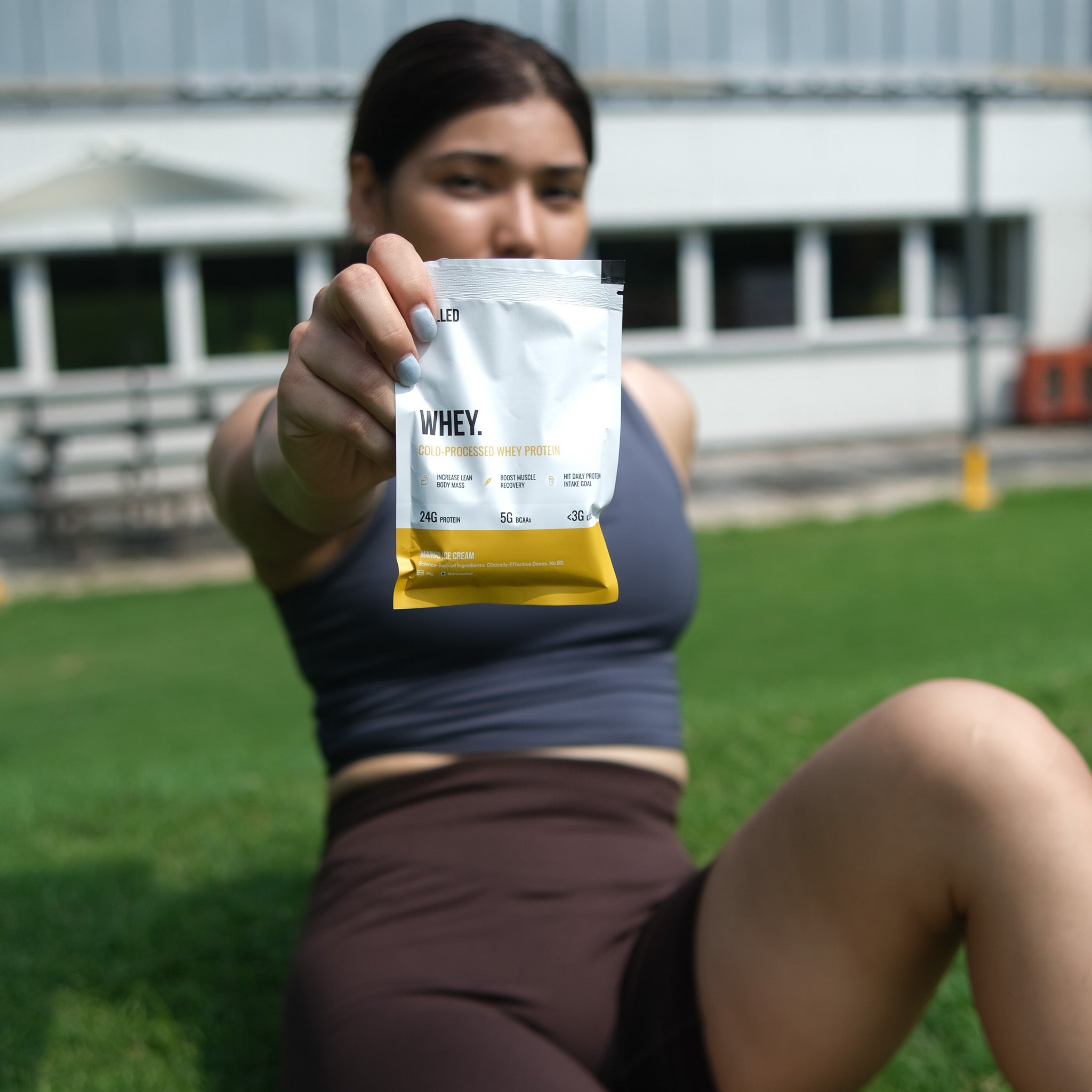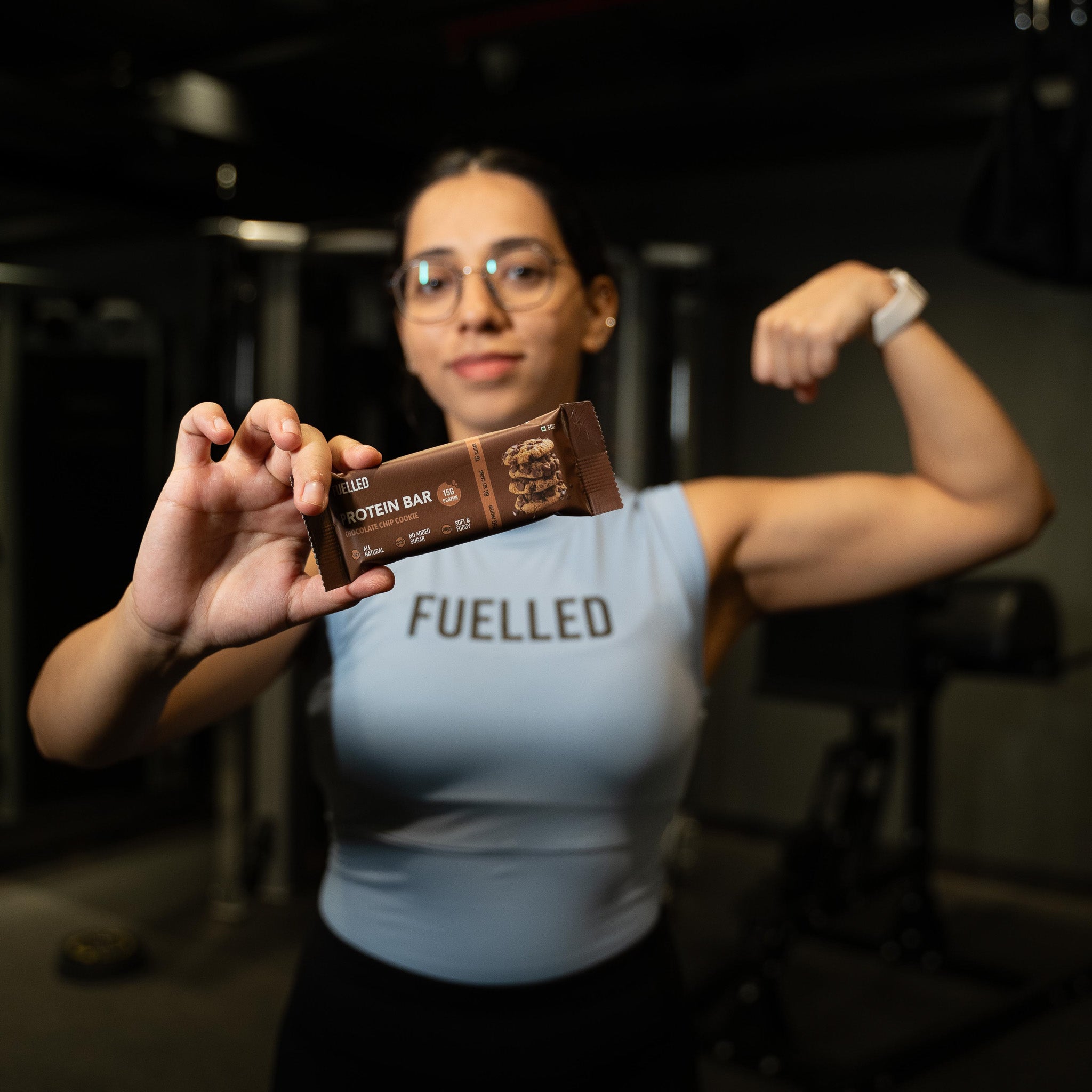So, you're interested in losing body fat and getting shredded? Well, you're not alone. It seems like everyone wants to have low body fat because it's not only attractive but also a sign of good health and vitality.
I mean, let's be real here, who doesn't want to look and feel good? Unless you're already at a healthy level of body fat, losing some can definitely help you achieve that.
Whether your goal is to step on stage at a bodybuilding show or simply look great at the beach, the process of losing body fat is pretty straightforward. You just need to burn more calories than you consume. Simple as that.
Now, the tricky part is figuring out the right macros for YOU to make it happen. But don't worry, I'm here to help you with that today.
So, stick around and take some notes. We'll dive into a bit of math and science, but I promise to keep things simple and easy to understand. First, let's address a question you might have...
WHAT ARE MACROS?
You've probably heard the term "macros" thrown around a lot, but do you know what it actually means?
Well, "macros" is short for macronutrients. These are the nutrients that our bodies need in larger amounts every day. They also provide us with energy in the form of calories.
The three main macronutrients are protein, carbohydrates, and fats. Now, I should mention that alcohol contains calories too, but since we don't need it to survive, we won't consider it as a macro for this article.
PROTEIN
Protein is an incredibly important macro that you simply can't live without. It's made up of amino acids, and different proteins have different concentrations of certain amino acids.
Proteins are involved in almost everything in your body, from building muscle tissue to producing hormones. That's why I always recommend focusing on your protein intake alongside your calorie intake. Eating more protein can help you maintain muscle while losing body fat, and it can even aid in fat loss itself. Pretty cool, right?
CARBOHYDRATES
Carbs are your body's preferred source of fuel, especially during exercise. Out of all the macros, carbs provide energy the fastest.
Now, when it comes to cutting diets, many people believe that you need to cut out carbs completely. But that's not necessarily true for everyone. Some people do better with lower carb intake, while others thrive with more carbs in their diet.
Personally, I've found that keeping my carb intake higher actually helps me achieve better fat loss results. However, if you have issues with insulin resistance, it might be beneficial to keep your carb intake lower. If you're unsure about this, it's always a good idea to consult with your physician.
FAT
Fats are essential for our bodies, and we can't live without them. They're not just used for energy and storage; they also play a crucial role in brain function and hormone production.
Back in the 90s, there was a popular fad diet that advocated for cutting fats as low as possible to lose weight. But let's face it, that was just a fad. While it's okay to eat lower amounts of fat, going too low for too long can lead to health issues.
WHAT ARE CALORIES?
Now that we've covered what macros are, let's tackle another question that might be on your mind: What exactly is a calorie, and how does it relate to macros?
Well, a calorie is simply a unit of energy. Being in a calorie deficit means that you're burning more energy than you're consuming.
This energy difference is what leads to fat loss. When you burn more energy than you eat, your body taps into its stored energy (fat or muscle) to make up the difference.
All the macros we just talked about contain calories. That's how the food you eat provides you with energy. However, if you consume too many calories, your body will store the excess as body fat.
Now, let's break down the calorie content of each macro:
- 1 gram of protein contains 4 calories.
- 1 gram of carbohydrates contains 4 calories.
- 1 gram of fat contains 9 calories.
As you can see, not all macros are created equal. Fat can add up quickly in terms of calories, so it's important to be mindful of your fat intake.
For example, imagine looking at a nutrition label and seeing 30 grams of protein, 30 grams of carbs, and 30 grams of fat. While you're getting a combined total of 240 calories from protein and carbs, you're actually getting 270 calories from fat alone! So, keep that in mind when reading nutrition labels.
CUTTING CALORIES VS. COUNTING MACROS
At the end of the day, cutting calories and counting macros are essentially talking about the same thing, but with a slightly different focus.
If you're only counting calories, you're basically saying that the source of those calories doesn't matter much. And if we're talking purely about weight loss, you're mostly correct.
When you consume fewer calories than you burn, you'll likely lose weight over time. However, this approach doesn't take into account where the weight loss is coming from. You might end up losing muscle along with fat, which isn't ideal.
But here's the thing: you don't have to accept that reality. There are ways to minimize muscle loss and maximize fat loss during the process, and that's where counting macros comes in.
By counting your macros, you're still focusing on eating a certain amount of calories, but you're taking it one step further. You make sure to eat enough protein to maintain or even build muscle, and you balance your carbs and fats in a way that suits your goals and lifestyle best.
This approach allows you to lose body fat while minimizing muscle loss at the same time. So, if you care about the quality of your results, the food sources you choose are just as important as the total number of calories.
HOW TO CALCULATE YOUR MACROS FOR CUTTING BODY FAT
When it comes to your cutting diet, setting up your macros properly is crucial. Without the right macros, you can't expect to see the results you want.
But how do you figure out the amount of calories you need? You probably don't have access to expensive equipment to measure everything accurately.
Well, I'm here to teach you a simple method to calculate your macros. Let's get started!
To cut body fat while maintaining or building muscle, I recommend following these two rules:
- Set your calories lower than the amount you burn daily.
- Set your protein intake to at least 2.2 gram per kg of your goal body weight.
Now, here's where things can get a bit confusing. How do you know how many calories you're burning every day? Should you rely on your smartwatch? Not so fast.
According to a study by the Stanford School of Medicine, fitness trackers accurately measure heart rate but not energy expenditure. In fact, the most accurate fitness tracker was off by 27%, while the least accurate one was off by a whopping 93%.
So, what can you do instead? Allow me to show you!
HOW TO CALCULATE YOUR MAINTENANCE CALORIES
You can break down the calories you burn into three main categories:
Resting Metabolic Rate: This is the number of calories your body burns at rest, just to keep you alive and functioning. It accounts for about 60-75% of your daily calorie burn.
Daily Activity: This includes any movement you do throughout the day, from intentional workouts to everyday tasks like walking around. The total amount varies depending on how active you are.
Thermic Effect of Food: This refers to the calories your body burns while digesting food. It varies based on what and how much you eat. Interestingly, protein has a higher thermic effect than carbs and fats.
Now, without expensive equipment, it's difficult to measure these accurately. But don't worry, there are calculations you can use to estimate your resting metabolic rate (RMR), which will give you a starting point.
One option is the Harris and Benedict equation, but let me show you an easier way. Multiply your body weight in kgs by 22. That will give you an estimate of your RMR.
For example, if you weigh 88 kgs, multiplying that by 22 gives you 1950 calories.
Now, keep in mind that this is just an estimate. It's not 100% accurate, but it gets you pretty close without too much hassle.
Your RMR is essentially your calorie floor. Going below that number might make your body feel like it's being starved, which can slow down your metabolism and hinder progress.
To find your maintenance level, multiply your body weight in kgs by 32-42. Use 32 if you're sedentary and don't get over 10,000 steps per day, 36 if you're more active and regularly get around 15,000-20,000 steps per day, and 33 if you're somewhere in between.
For example, if I'm moderately active and weigh 88 kgs, multiplying that by 33 gives me 2904 calories. That's an estimate of the calories needed to maintain my current weight.
If I want to cut body fat, I need to consume fewer calories than 2904, but still above 1950. It's best to start conservatively and not drop your calories too low right away. This gives you room to make adjustments in the future when you hit a plateau (which happens to all of us).
A healthy rate of weight loss is around 0.5-1 kg per week. Since 1 kg of fat is roughly 7700 calories, you'll need to create a deficit of about 500-1000 calories per day.
So, subtracting 500 calories from your maintenance level is a good starting point. For me, that would be 2404 calories. Make sense so far?
It's all about finding the right balance—eating less than you burn, but not so little that your body goes into full-on starvation mode and slows down your metabolism.
Now, let's move on to the next question: What should your macros be?
HOW TO CALCULATE YOUR MACROS
Alright, we've figured out the number of calories you should start with. Now, let's break down the macro breakdown out of those calories.
As we discussed earlier, each macro has a different calorie content:
- Protein: 4 calories per gram
- Carbohydrates: 4 calories per gram
- Fat: 9 calories per gram
When it comes to setting your macros, always start with protein!
Research shows that when you're on a cutting diet, eating the recommended daily allowance (RDA) of 0.8 grams of protein per kilogram of body weight leads to significant muscle loss. On the other hand, consuming 2.2 grams of protein per kilogram of body weight results in significantly less muscle loss.
To keep things simple, let's aim for 2.2 grams of protein per kg of your goal body weight. So, if you want to lose 5 kgs and reach 83 kgs, set your protein intake at 193 grams per day.
Now, let's calculate the calories from protein. Multiply the grams of protein by 4 (since there are 4 calories per gram). In this case, 193 grams x 4 calories per gram = 772 calories from protein.
With protein set, we can now focus on carbs and fats. Subtract the protein calories from your overall calorie goal. For example, if your total calories are 2404 and you have 772 calories from protein, you're left with 1632 calories for carbs and fats.
Next, you need to decide whether you prefer a higher fat or higher carb diet. It doesn't make a huge difference where you set these macros, as long as your fat intake isn't too low. From there, you can customize the amounts to your liking.
For females, I recommend not setting your fats lower than 40 grams daily, while for males, 50 grams daily is a good minimum.
Let's say you want to keep your fats moderately high at 100 grams per day. That means you'll have 900 calories from fat (100 grams x 9 calories per gram).
To find your carb intake, split the remaining calories between carbs and fats. In this case, it would be 1632 calories - 900 calories = 732 calories for carbs.
To convert that into grams, divide the calories by 4 (since there are 4 calories per gram of carbs). So, 732 calories / 4 = 183 grams of carbs.
So, your final macro breakdown would look like this:
- Total calories: 2404
- Protein: 193 grams
- Carbs: 183 grams
- Fat: 100 grams
See? It's not as complicated as it may seem! If you have a specific carb goal in mind, you can work backward and adjust the fats accordingly.
PUTTING THESE MACROS INTO PRACTICE
To successfully follow your macros, planning is key. If you don't plan your meals and just wing it, chances are you won't hit the right ratios of food.
It's also crucial to track your meals. Without tracking, you won't know if you're hitting or missing the mark!
Make protein the centerpiece of every meal. Divide your daily protein intake by the number of meals you plan to have. For example, if you aim for 4 meals per day and have 193 grams of protein, that's 48.25 grams of protein per meal.
Ensure that each meal contains at least that amount of protein, and then add other foods to help you reach your carb and fat goals. Don't forget to include fruits and veggies in each meal for added nutrients.
Pre-tracking your entire day's meals can make a big difference too. It helps you hit your numbers more easily and consistently.
Remember, consistency is key when it comes to reaching your goals. Stick to your macros, stay active, and be patient. Results will come!
I hope this breakdown of macros and calories has been helpful to you. If you have any further questions, feel free to ask. Good luck on your journey to getting shredded!










3 comments
Liv Pure
I’ve added this product to my nighttime routine, and my skin has never looked better. It’s like beauty sleep in a bottle. click here to discover the secret to overnight rejuvenation!
Liv Pure Health & Fitness - Dietary Supplements
good…https://acdf4zfmx964j3adlkzf4d0t2g.hop.clickbank.net
Health & Fitness - Dietary Supplements(Sugar Defender - New Blood Sugar and Type 2)
good… https://8bd179fk-zysnv6gvcjdq-px00.hop.clickbank.net
Leave a comment
This site is protected by hCaptcha and the hCaptcha Privacy Policy and Terms of Service apply.